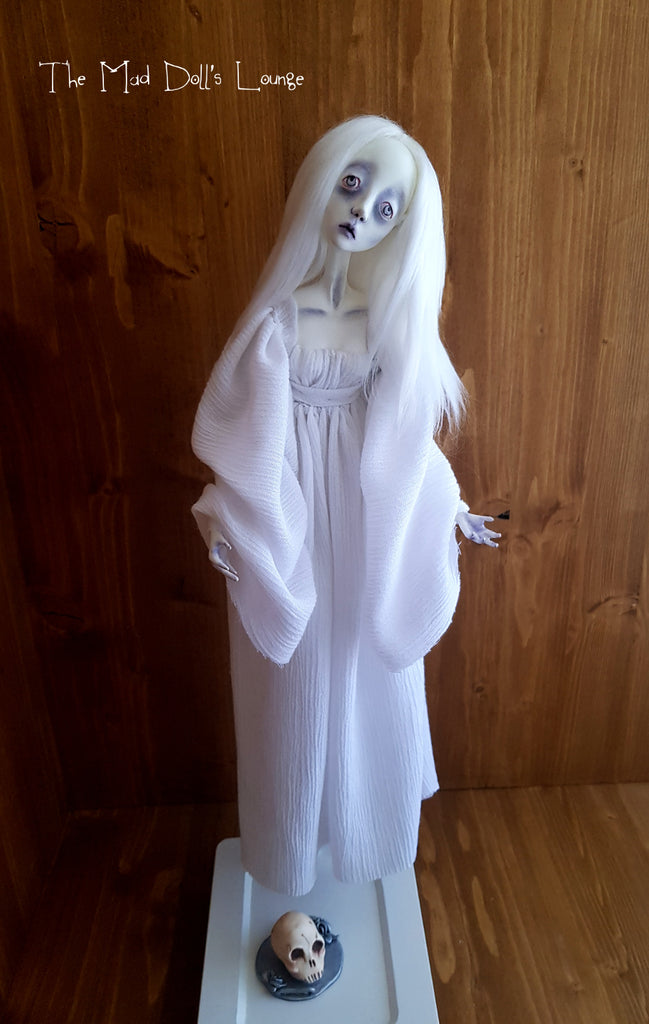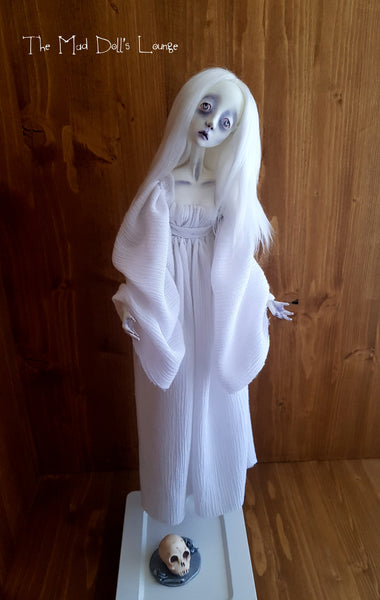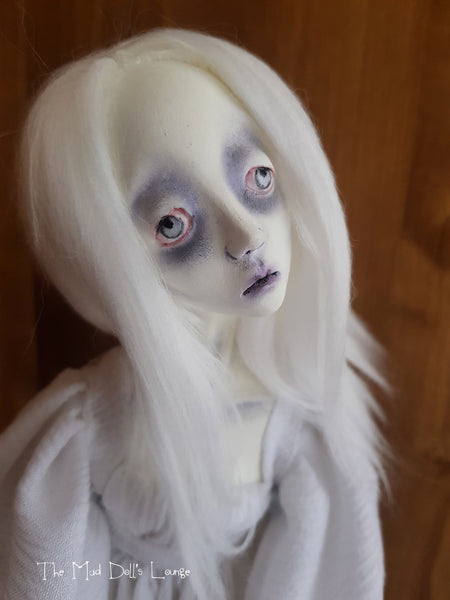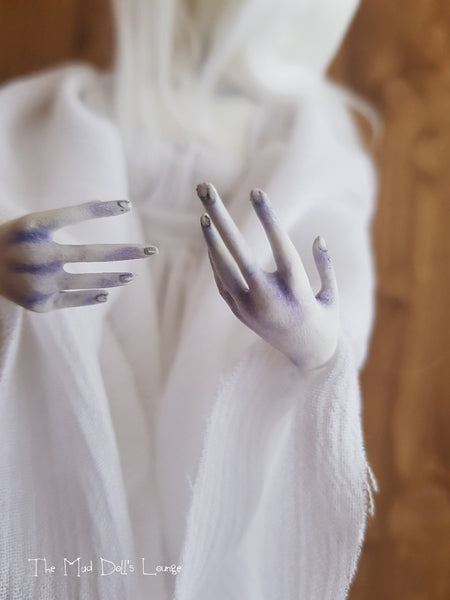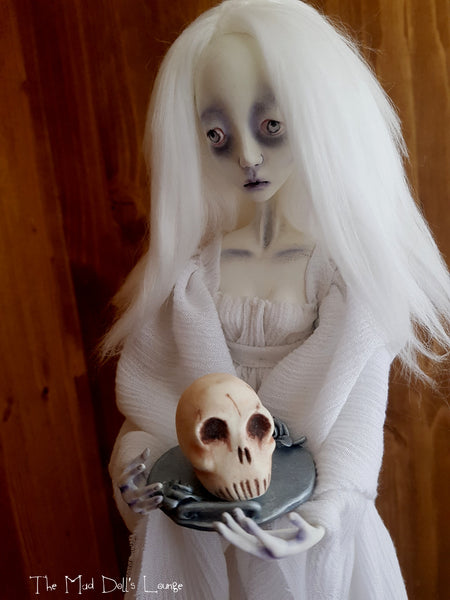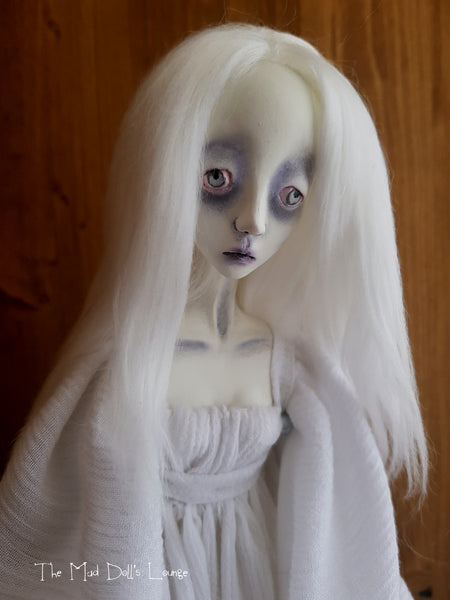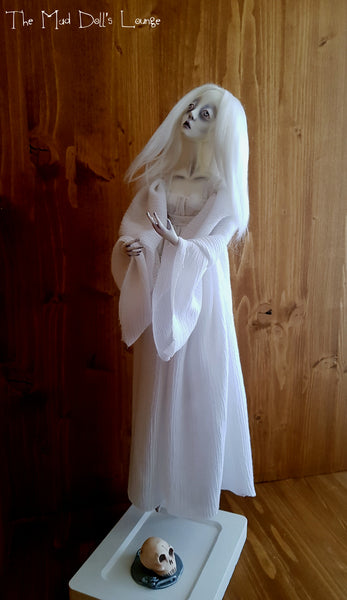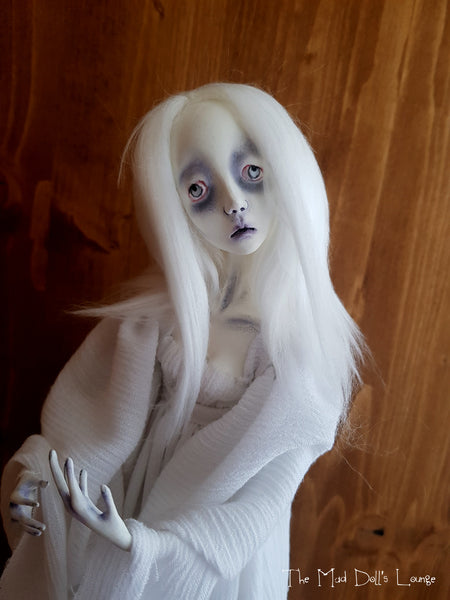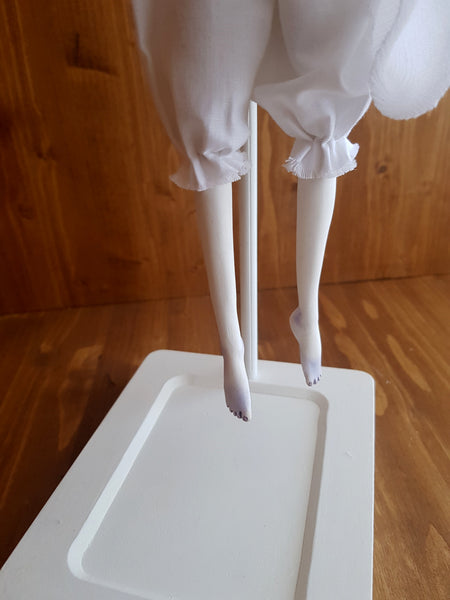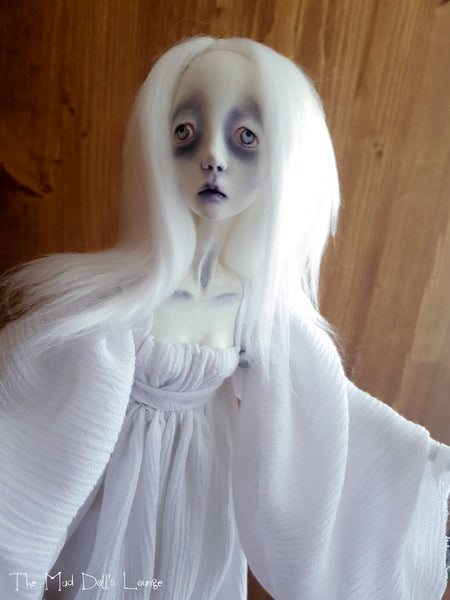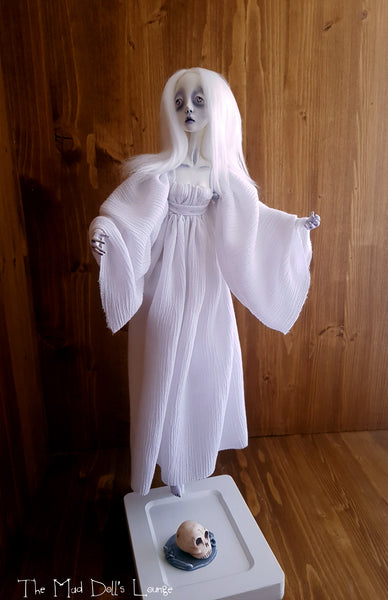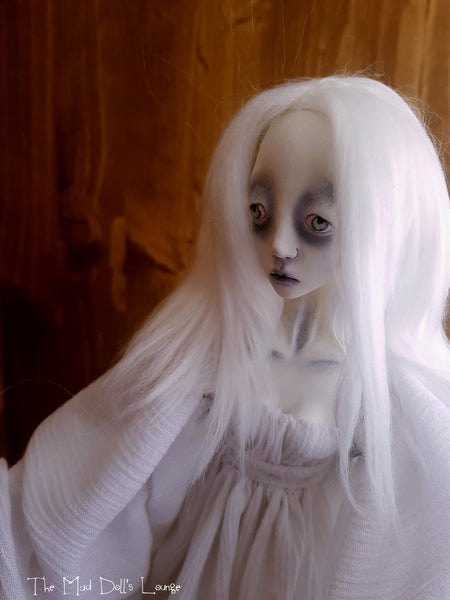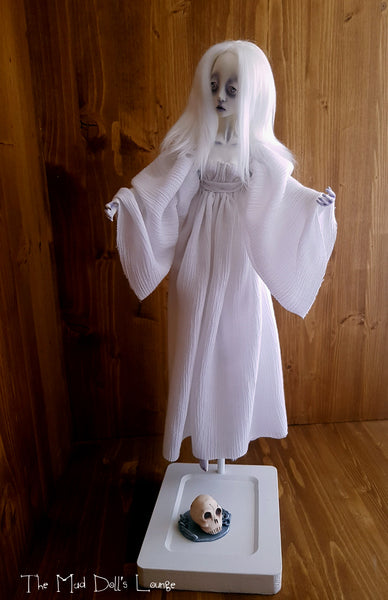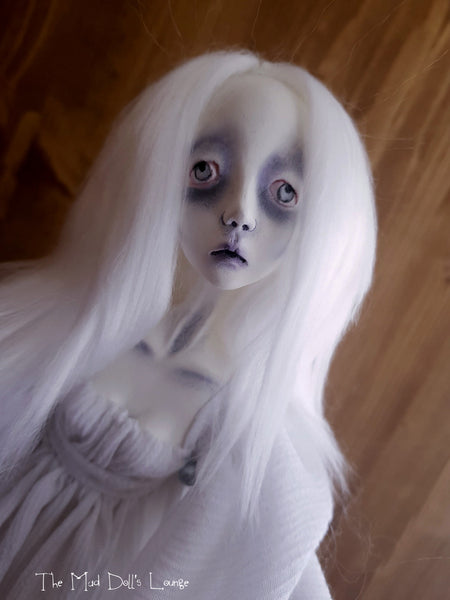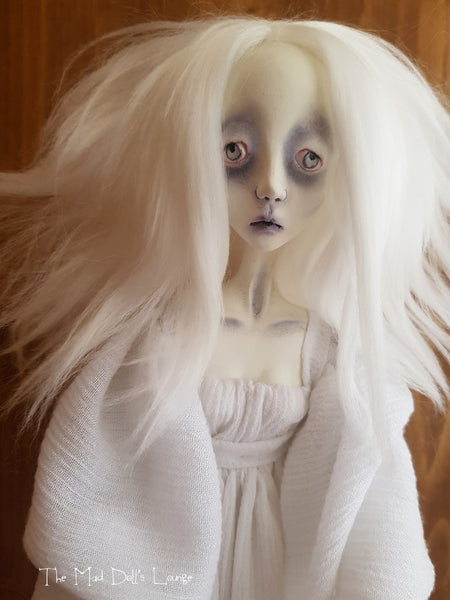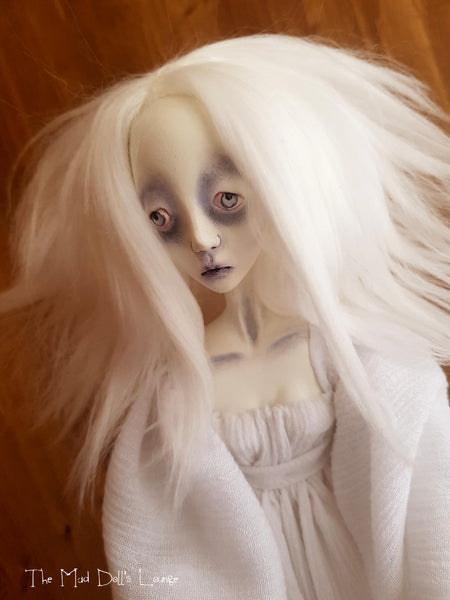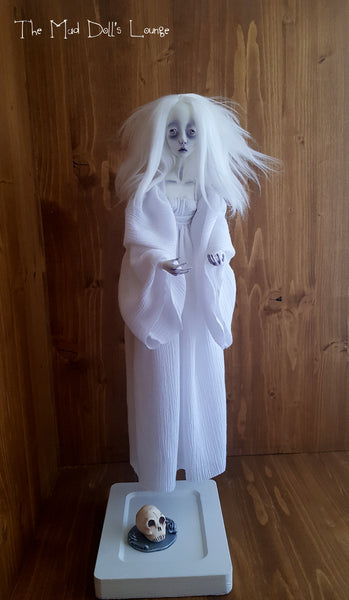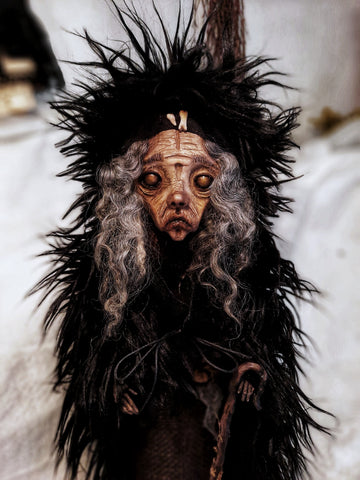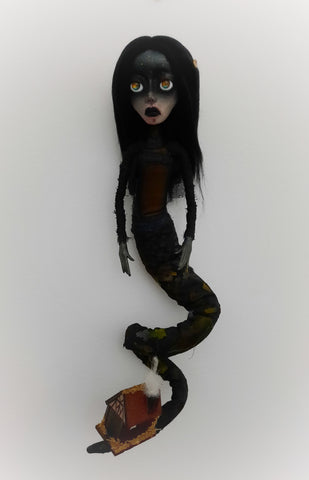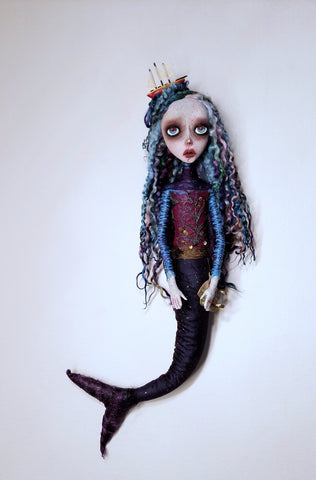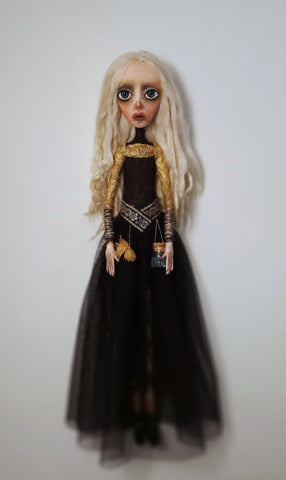Cactus Gallery LA
A TRIBUTE TO BEATRICE CENCI by artist Simona Mereu
OOAK Mixed media Art Doll, 15.3” tall, with her doll stand 17.3” tall
The doll's body has a wire armature. The wire is a special one that can withstand bending.
The head is ball jointed allowing Beatrice to move her head in all directions.
Lower arms and lower legs are made with paper clay. The body is soft, it is made with polyester fiber filling needle felted over the wire armature to give the right shape.
All body is covered with cotton, and then dressed.
Arms and legs can be bent without any problems. On both arms and legs, if you touch them, you will find a small depression, that is the point you can use to gently bend and move arms and legs.
I made it this way to avoid bending on paper clay parts.
The wig is made with viscose fiber.
This doll is a OOAK doll. I do not use molds.
When on the doll stand it looks like Beatrice is floating. By adjusting the arms, the head position, and even the hair in a certain way, a very dramatic effect can be reached.
About BEATRICE: For this exhibition I chose the true story (and legend) of Beatrice Cenci a young noblewoman of Rome (my city) who, together with her family had her father killed. Her father was an abusive man, who, the legend says used to rape Beatrice.
After her father's death, the pope wanted to investigate and found out that the whole family was guilty.
Beatrice and her mom were beheaded in the very center of Rome on September 11th 1599. The whole family was killed with exception of her younger brother. Although the people of Rome begged the pope to spare Beatrice's life, the pope had no mercy.
Her head was placed on a silver platter and buried in her tomb.
When the French came to Rome, at the end of the 18th century, they raided even the cemeteries. They broke Beatrice's tomb and stole the silver platter. Then a soldier threw the skull like it was a playing ball.
Beatrice has become a symbol to the people of Rome of resistance against the arrogant aristocracy, and a legend arose. It is related that every year on the night before the anniversary of her death, she comes back to the bridge where she was executed, carrying her severed head.
This is the story of Beatrice Cenci.

